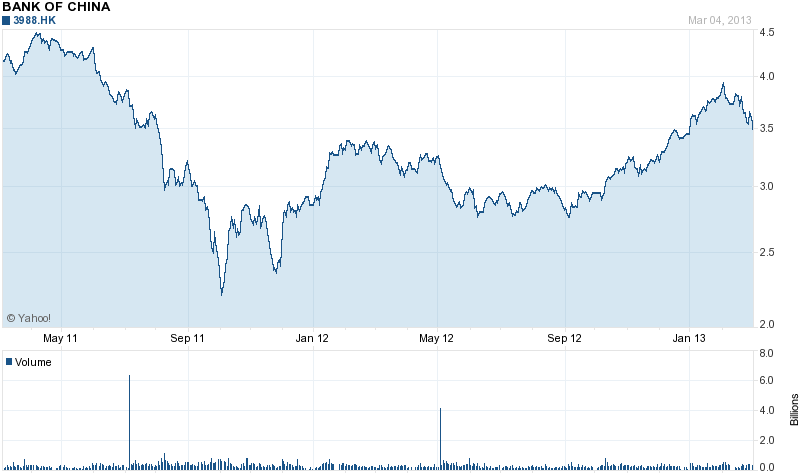In the past week, I have received several emails in the wake of the 60 Minutes story about the Chinese property bubble and the news that China had unexpectedly implemented curbs to limit property speculation. In the wake of the curbs being implemented, (via Bloomberg), the Shanghai market tanked:
China’s cabinet on March 1 told cities with “excessively fast” price gains to raise down-payment requirements and interest rates on second-home mortgages and ordered individuals selling properties to “strictly” pay a 20 percent tax on the sale profit when the original purchase price is available, a levy that is being easily avoided.
“The measures are much stronger than expected and will have more longer-term implications on the market,” said Zhao Zhenyi, a Shanghai-based property analyst at Industrial Securities Co., who downgraded the sector to neutral. “With the new tightening mainly on existing homes, buyers will not be able to take much leverage at all.’
The People’s Bank of China’s regional branches may implement the measures in accordance with the price-control targets of local governments, the central government said in a statement on its website. Cities facing ‘‘relatively large” pressure from rising house prices must further tighten home- purchase limits, according to the statement.
Given these inquiries, it was time for me to write a follow-up to my post about how to watch for signs of a crash in China (see The canaries in the Chinese coalmine), where I wrote that I was watching the prices of the Chinese state banks listed in Hong Kong for signs of financial stress:
Traders should be aware of these risks, but not panic. The current risk of an immediate meltdown is low and there is a timing tool available. I am watching my four canaries in the Chinese coalmine, namely the share price of the Chinese banks listed in HK:
- Agricultural Bank of China Limited (1288.HK)
- Bank of China (3988.HK)
- Industrial and Commercial Bank of China Limited (1398.HK)
- China Merchants Bank Co., Ltd. (3968.HK)
The chart patterns of all four banks are roughly the same. Here is the Bank of China as an example:
The shares have pulled back a bit from recent highs, but show no signs of cratering.
Let me make something clear: These stocks are barometers of trouble in the official and unofficial banking system in China, but they are only indicators of catastrophic breakdown. Don't be overly concerned until the share price at least probes its 2012 lows. The sign to head for the foxhole is when the shares start to test its all-time lows.
As I write these word, the Shanghai Composite is staging a rally and recovering some of its losses. So relax and don't worry about little squiggles in the share prices.
Disclosure: Cam Hui is a portfolio manager at Qwest Investment Fund Management Ltd. ("Qwest"). This article is prepared by Mr. Hui as an outside business activity. As such, Qwest does not review or approve materials presented herein. The opinions and any recommendations expressed in this blog are those of the author and do not reflect the opinions or recommendations of Qwest.
None of the information or opinions expressed in this blog constitutes a solicitation for the purchase or sale of any security or other instrument. Nothing in this article constitutes investment advice and any recommendations that may be contained herein have not been based upon a consideration of the investment objectives, financial situation or particular needs of any specific recipient. Any purchase or sale activity in any securities or other instrument should be based upon your own analysis and conclusions. Past performance is not indicative of future results. Either Qwest or Mr. Hui may hold or control long or short positions in the securities or instruments mentioned.
